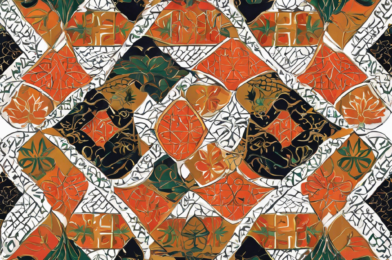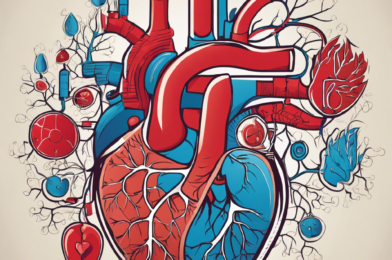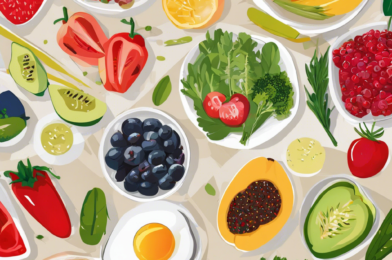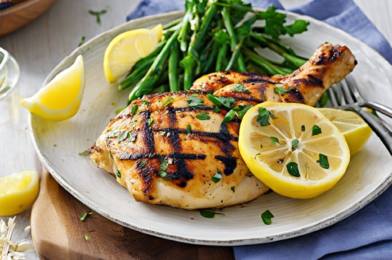البرتقال فاكهة لذيذة ومحبوبة لدى الكثيرين، ولكن هل تعلم أن فوائدها لا تقتصر على مذاقها المنعش فقط؟ إن لعصير البرتقال وبشرته فوائد جمالية وصحية مذهلة للبشرة. فهي كنز حقيقي للجمال الطبيعي. دعونا نستكشف معاً كيف يمكن أن يكون البرتقال صديقك المقرب للحصول على بشرة صحية ومشرقة.
أولاً، يعتبر البرتقال مصدراً غنياً بفيتامين (C)، وهو فيتامين أساسي لمكافحة الشيخوخة. إن استخدام عصير البرتقال مباشرة على البشرة يساعد في تعزيز إنتاج الكولاجين، مما يحافظ على مرونة البشرة ونضارتها. كما يساهم فيتامين (C) في تفتيح البشرة وتوحيد لونها، مما يجعله علاجاً رائعاً للتخلص من البقع الداكنة والتصبغات.
كما يمكن أن يكون البرتقال علاجاً طبيعياً فعالاً لحب الشباب. تتميز هذه الفاكهة بخصائصها المضادة للبكتيريا والالتهابات، والتي تساعد في مكافحة البكتيريا المسببة لحب الشباب. فببساطة، يمكنك فرك شرائح البرتقال على البشرة المتأثرة بحب الشباب، وتترك بشرتك ناعمة ونضرة.
بالإضافة إلى ذلك، يعمل البرتقال على ترطيب البشرة الجافة. فهو غني بالمواد المضادة للأكسدة التي تساعد في حماية البشرة من الجفاف والضرر الذي تسببه العوامل البيئية. إن استخدام عصير البرتقال الطازج كتونر للوجه يمكن أن يمنح بشرتك مظهراً صحياً ولامعاً.
وبالنسبة للبشرة الحساسة، يعد البرتقال علاجاً لطيفاً وفعالاً. يمكنك تحضير قناع من عصير البرتقال والعسل، والذي يعمل على تهدئة البشرة الملتهبة وتغذيتها، مما يمنحك شعوراً بالانتعاش والارتياح.
علاوة على ذلك، يمكن استخدام قشور البرتقال كمقشر طبيعي للبشرة. حيث تساعد حبيبات القشور على إزالة خلايا الجلد الميت بلطف، وتترك بشرتك ناعمة وحريرية.
إن فوائد البرتقال للبشرة لا تقتصر على المذكورة أعلاه، فهي عديدة ومتنوعة. فهذه الفاكهة المذهلة…
تضمن لك البشرة الصحية والمشرقة. استخدمي عصير البرتقال وبشرته في روتينك اليومي للعناية بالبشرة، واستمتعي بفوائده الطبيعية الرائعة. ومع ذلك، لا بد من إجراء اختبار حساسية بسيط قبل استخدام البرتقال على البشرة، خاصة إذا كانت بشرتك حساسة. فالبعض قد يكون لديهم حساسية من الحمضيات، لذا احرصي على مراقبة بشرتك عند استخدام أي مكونات جديدة.
في عالم العناية بالبشرة، يُعد البرتقال كنزاً ثميناً يُغفل عنه في كثير من الأحيان. حيث يمكن استخدامه لعلاج مجموعة متنوعة من مشاكل البشرة، بدءاً من حب الشباب وحتى علامات الشيخوخة. ففوائده لا تقتصر على التغذية فقط، بل تشمل أيضاً تحسين المظهر العام للبشرة.
فإذا كنت تبحث عن حلول طبيعية وفعالة لمشاكل البشرة، فلا تتردد في إضافة البرتقال إلى روتينك الجمالي. يمكنك استخدامه كعصير طازج أو قناع أو مقشر، وستلاحظ النتائج الرائعة على بشرتك.
كما يمكنك الاستمتاع بتناول البرتقال كوجبة خفيفة صحية ولذيذة، فهي طريقة رائعة للحصول على فوائد فيتامين (C) ومضادات الأكسدة، والتي ستعزز صحة ونضارة بشرتك من الداخل والخارج.
لذا، لا تتجاهل قوة هذه الفاكهة المذهلة في روتينك اليومي للعناية بالبشرة. ابدأ الآن باستخدام البرتقال، واستمتع ببشرة صحية ومشرقة. إن فوائده الطبيعية ستجعلك تتساءل لماذا لم تستخدمه من قبل! فهي…
لا تتوقف عند حدود معينة، فهي فاكهة متعددة الاستخدامات في روتين العناية بالبشرة.
يمكنك أيضاً استخدام البرتقال كعلاج طبيعي للهالات السوداء. فمحتواه العالي من فيتامين (C) يساعد في تحسين الدورة الدموية في منطقة العين، مما يقلل من ظهور الهالات السوداء.
بالإضافة إلى ذلك، يعد البرتقال رائعاً في علاج البشرة الدهنية. حيث يساعد حمض الستريك الموجود في البرتقال على موازنة إنتاج الزهم، مما يمنع تراكم الزيوت الزائدة على البشرة.
إن فوائد البرتقال للجمال لا تقتصر على الوجه فقط، بل يمكنك استخدامه للعناية ببشرة الجسم أيضاً. فخلط قشور البرتقال المطحونة مع زيت جوز الهند يصنع مقشراً طبيعياً رائعاً للجسم، والذي يترك بشرتك ناعمة ونضرة.
كما يمكن لعصير البرتقال أن يكون علاجاً فعالاً للندوب وعلامات التمدد. حيث يساعد محتواه من فيتامين (C) على تحفيز إنتاج الكولاجين، مما يساهم في تجديد البشرة وتقليل ظهور الندوب والعلامات.
وبالنسبة للأشخاص الذين يعانون من البشرة الجافة والمتشققة، يمكن لعصير البرتقال أن يكون مرطباً طبيعياً رائعاً. فمزجه مع العسل يصنع مرطباً غنياً يعيد النضارة والرطوبة إلى بشرتك.
إنه حقاً فاكهة سحرية للعناية بالبشرة، ففوائد البرتقال…
تتجاوز حدود الخيال! يمكنك استخدامه بطرق مختلفة لعلاج مشاكل البشرة الشائعة.
كما يمكن استخدام البرتقال كعلاج طبيعي للحكة. فخصائصه المضادة للالتهابات تساعد في تهدئة البشرة الملتهبة والحكة. ببساطة، استخدمي شرائح البرتقال الطازجة على المنطقة المصابة، وستشعرين بالراحة والانتعاش.
وبالنسبة للأشخاص الذين يعانون من البشرة الباهتة، يعتبر البرتقال علاجاً ممتازاً. حيث يساعد فيتامين (C) الموجود في البرتقال على تفتيح وتوحيد لون البشرة، مما يمنحك إشراقة طبيعية.
كما يمكن استخدام البرتقال كعلاج منزلي فعال لالتهابات البشرة. فخصائصه المضادة للبكتيريا تساعد في علاج الالتهابات البكتيرية، خاصة تلك المتعلقة بحب الشباب.
إن البرتقال ليس مجرد فاكهة لذيذة، بل هو علاج طبيعي ساحر للبشرة. فالعناية بالبشرة باستخدام البرتقال هي طريقة آمنة وطبيعية لتحسين مظهر بشرتك ومكافحة مشاكلها.
فلا داعي للقلق بشأن الآثار الجانبية للمنتجات الكيميائية، فمع البرتقال، ستستمتع بفوائد طبيعية رائعة لجمالك. إنه…
السر الذي كنت تبحث عنه لتحقيق بشرة صحية ومشرقة.
استخدم البرتقال كعصير طازج لشرب فوائده، أو كقناع لتعزيز جمال بشرتك، أو حتى كمقشر طبيعي لتنعيمها. إن الطرق التي يمكنك من خلالها الاستفادة من البرتقال للعناية بالبشرة لا حصر لها.
وتعد هذه الفاكهة غنية بالمواد المغذية الأساسية، مثل فيتامين (C) والبوتاسيوم وحمض الفوليك، والتي تلعب جميعها دوراً مهماً في الحفاظ على صحة بشرتك.
وبالإضافة إلى ذلك، فإن البرتقال غني بالفلافونويدات، وهي مواد مضادة للأكسدة تحمي البشرة من الضرر الناتج عن الجذور الحرة.
حتى قشور البرتقال لها استخداماتها الخاصة في عالم الجمال. فهي تساعد في تقشير البشرة بلطف، مما يزيل خلايا الجلد الميتة ويعزز تجدد الخلايا.
وبالنسبة لأولئك الذين يعانون من حب الشباب، يمكن لعصير البرتقال الطازج أن يكون علاجاً طبيعياً فعالاً. فحمض الستريك الموجود في البرتقال يساعد في تجفيف البثور والتخلص منها، مما يمنحك بش



